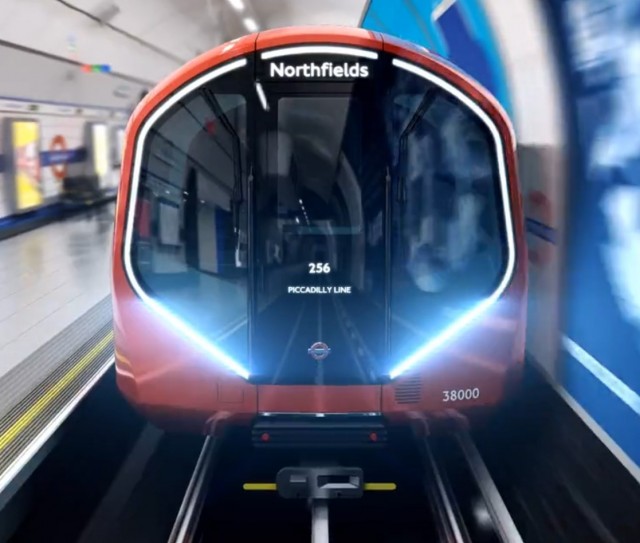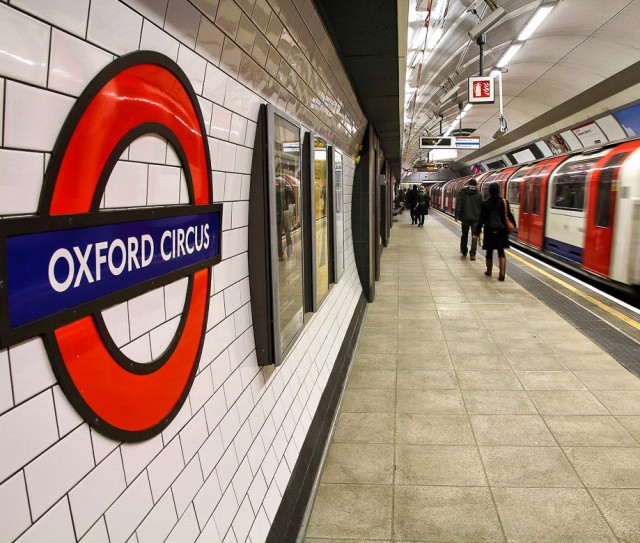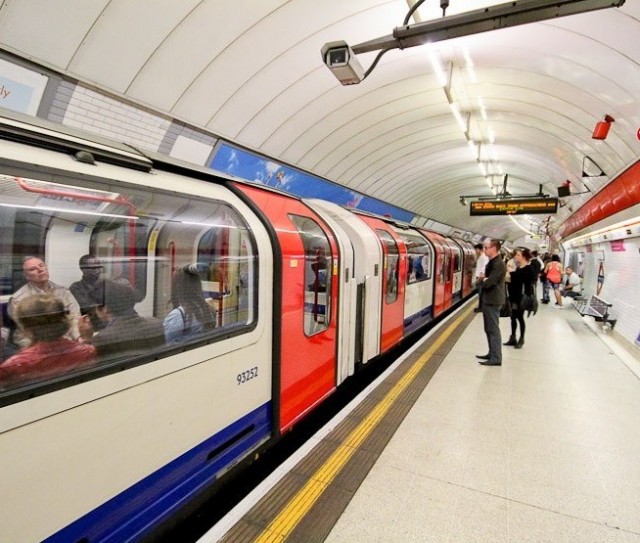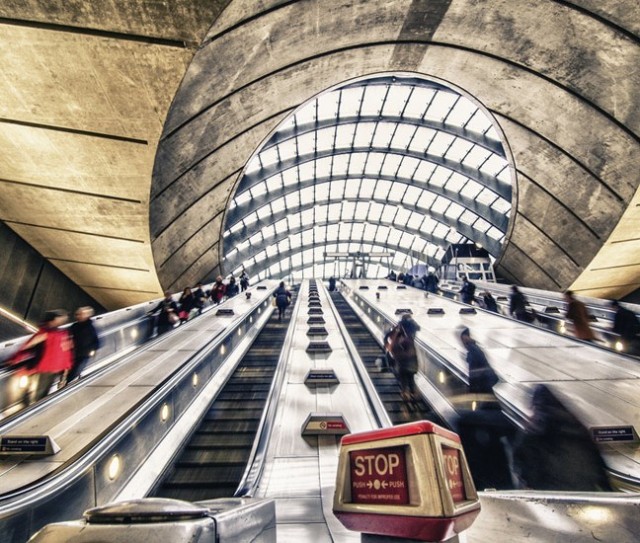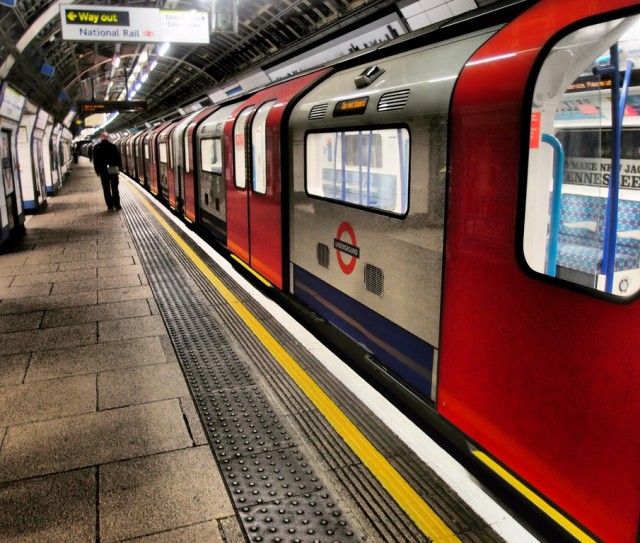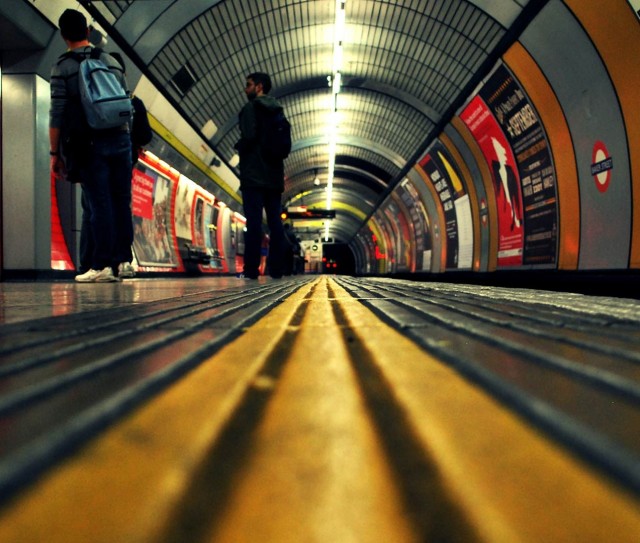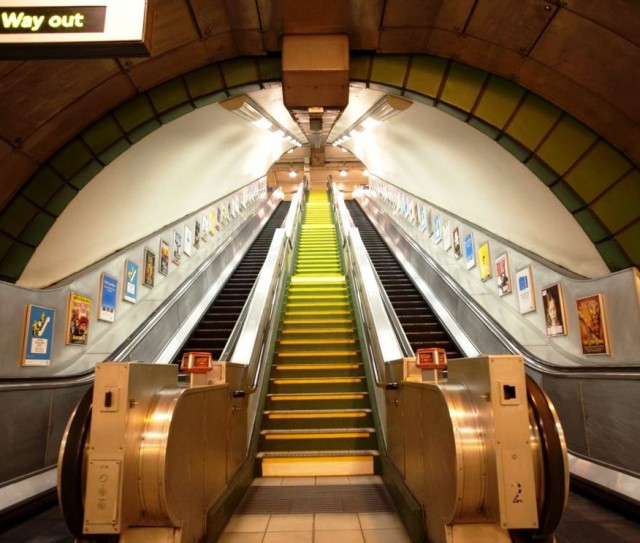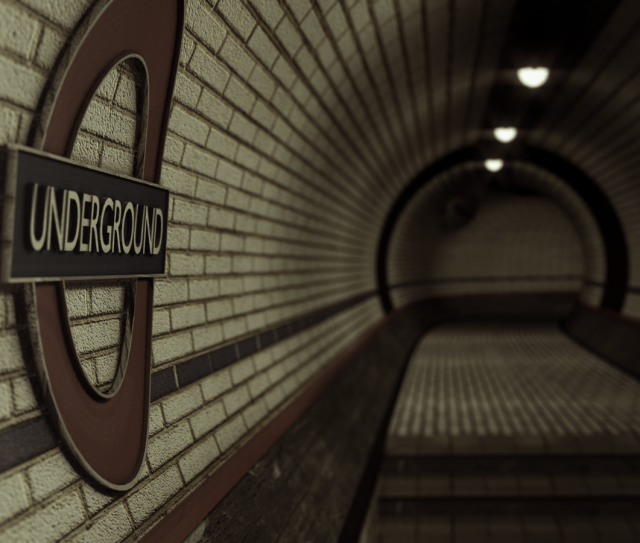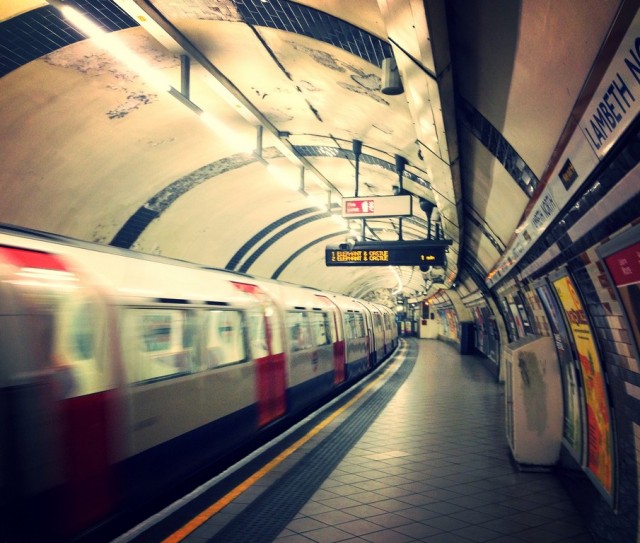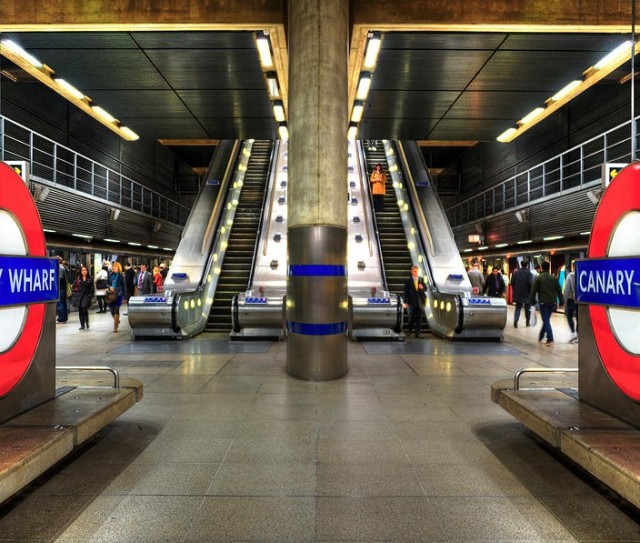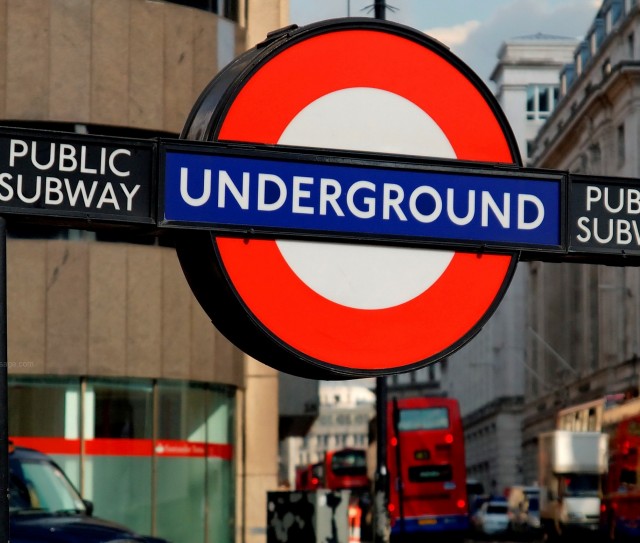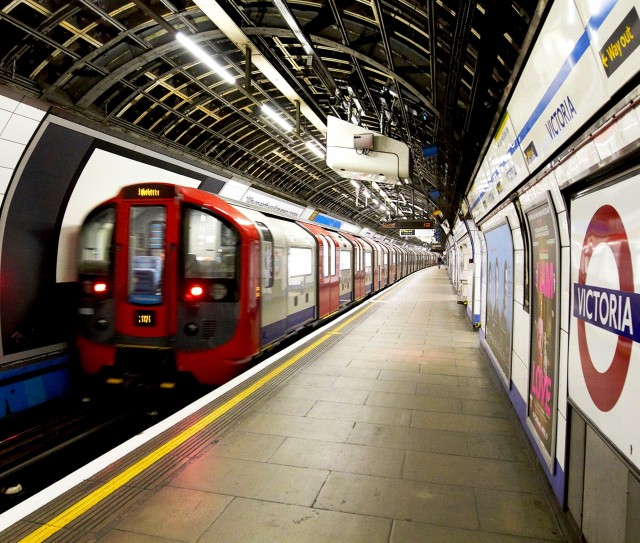- Bakerloo line
- Harrow & Wealdstone
- Kenton
- South Kenton
- North Wembley
- Wembley Central
- Stonebridge Park
- Harlesden
- Willesden Junction
- Kensal Green
- Queen's Park
- Kilburn Park
- Maida Vale
- Warwick Avenue
- Paddington
- Edgware Road
- Marylebone
- Baker Street
- Regent's Park
- Oxford Circus
- Piccadilly Circus
- Charing Cross
- Embankment
- Waterloo
- Lambeth North
- Elephant & Castle
- Central line
- North Acton
- East Acton
- White City
- Shepherd's Bush
- Holland Park
- Notting Hill Gate
- Queensway
- Lancaster Gate
- Marble Arch
- Bond Street
- Oxford Circus
- Tottenham Court Road
- Holborn
- Chancery Lane
- St. Paul's
- Bank
- Liverpool Street
- Bethnal Green
- Mile End
- Stratford
- Leyton
- Leytonstone
- West Ruislip
- Ruislip Gardens
- South Ruislip
- Northolt
- Greenford
- Perivale
- Hanger Lane
- North Acton
- Ealing Broadway
- West Acton
- North Acton
- Leytonstone
- Snaresbrook
- South Woodford
- Woodford
- Buckhurst Hill
- Loughton
- Debden
- Theydon Bois
- Epping
- Leytonstone
- Wanstead
- Redbridge
- Gants Hill
- Newbury Park
- Barkingside
- Fairlop
- Hainault
- Grange Hill
- Chigwell
- Roding Valley
- Woodford
- Circle line
- Hammersmith
- Goldhawk Road
- Shepherd's Bush Market
- Wood Lane
- Latimer Road
- Ladbroke Grove
- Westbourne Park
- Royal Oak
- Paddington
- Edgware Road
- Baker Street
- Great Portland Street
- Euston Square
- King's Cross St. Pancras
- Farringdon
- Barbican
- Moorgate
- Liverpool Street
- Aldgate
- Tower Hill
- Monument
- Cannon Street
- Mansion House
- Blackfriars
- Temple
- Embankment
- Westminster
- St James's Park
- Victoria
- Sloane Square
- South Kensington
- Gloucester Road
- High Street Kensington
- Notting Hill Gate
- Bayswater
- Paddington
- Edgware Road
- District line
- Turnham Green
- Stamford Brook
- Ravenscourt Park
- Hammersmith
- Barons Court
- West Kensington
- Earl's Court
- Gloucester Road
- South Kensington
- Sloane Square
- Victoria
- St James's Park
- Westminster
- Embankment
- Temple
- Blackfriars
- Mansion House
- Cannon Street
- Monument
- Tower Hill
- Aldgate East
- Whitechapel
- Stepney Green
- Mile End
- Bow Road
- Bromley -by-Bow
- West Ham
- Plaistow
- Upton Park
- East Ham
- Barking
- Upney
- Becontree
- Dagenham Heathway
- Dagenham East
- Elm Park
- Hornchurch
- Upminster Bridge
- Upminster
- Ealing Broadway
- Ealing Common
- Acton Town
- Chiswick Park
- Turnham Green
- Richmond
- Kew Gardens
- Gunnersbury
- Turnham Green
- Edgware Road
- Paddington
- Bayswater
- Notting Hill Gate
- High Street Kensington
- Earl's Court
- Earl's Court
- West Brompton
- Fulham Broadway
- Parsons Green
- Putney Bridge
- East Putney
- Southfields
- Wimbledon Park
- Wimbledon
- Hammersmith & City line
- Hammersmith
- Goldhawk Road
- Shepherd's Bush Market
- Wood Lane
- Latimer Road
- Ladbroke Grove
- Westbourne Park
- Royal Oak
- Paddington
- Edgware Road
- Baker Street
- Great Portland Street
- Euston Square
- King's Cross St. Pancras
- Farringdon
- Barbican
- Moorgate
- Liverpool Street
- Aldgate East
- Whitechapel
- Stepney Green
- Mile End
- Bow Road
- Bromley-by-Bow
- West Ham
- Plaistow
- Upton Park
- East Ham
- Barking
- Jubilee line
- Stanmore
- Canons Park
- Queensbury
- Kingsbury
- Wembley Park
- Neasden
- Dollis Hill
- Willesden Green
- Kilburn
- West Hampstead
- Finchley Road
- Swiss Cottage
- St. John's Wood
- Baker Street
- Bond Street
- Green Park
- Westminster
- Waterloo
- Southwark
- London Bridge
- Bermondsey
- Canada Water
- Canary Wharf
- North Greenwich
- Canning Town
- West Ham
- Stratford
- Metropolitan line
- Harrow- on-the-Hill
- Northwick Park
- Preston Road
- Wembley Park
- Finchley Road
- Baker Street
- Great Portland Street
- Euston Square
- King's Cross St. Pancras
- Farringdon
- Barbican
- Moorgate
- Liverpool Street
- Aldgate
- Uxbridge
- Hillingdon
- Ickenham
- Ruislip
- Ruislip Manor
- Eastcote
- Rayners Lane
- West Harrow
- Harrow-on-the-Hill
- Moor Park
- Northwood
- Northwood Hills
- Pinner
- North Harrow
- Harrow-on-the-Hill
- Watford
- Croxley
- Moor Park
- Chalfont & Latimer
- Chorleywood
- Rickmansworth
- Moor Park
- Amersham
- Chalfont & Latimer
- Chesham
- Chalfont & Latimer
- Northern line
- Kennington
- Oval
- Stockwell
- Clapham North
- Clapham Common
- Clapham South
- Balham
- Tooting Bec
- Tooting Broadway
- Colliers Wood
- South Wimbledon
- Morden
- Edgware
- Burnt Oak
- Colindale
- Hendon Central
- Brent Cross
- Golders Green
- Hampstead
- Belsize Park
- Chalk Farm
- Camden Town
- Mornington Crescent
- Euston
- Warren Street
- Goodge Street
- Tottenham Court Road
- Leicester Square
- Charing Cross
- Embankment
- Waterloo
- Kennington
- Battersea Power Station
- Nine Elms
- Kennington
- Finchley Central
- East Finchley
- Highgate
- Archway
- Tufnell Park
- Kentish Town
- Camden Town
- Euston
- King's Cross St. Pancras
- Angel
- Old Street
- Moorgate
- Bank
- London Bridge
- Borough
- Elephant & Castle
- Kennington
- High Barnet
- Totteridge & Whetstone
- Woodside Park
- West Finchley
- Finchley Central
- Mill Hill East
- Finchley Central
- Piccadilly line
- Cockfosters
- Oakwood
- Southgate
- Arnos Grove
- Bounds Green
- Wood Green
- Turnpike Lane
- Manor House
- Finsbury Park
- Arsenal
- Holloway Road
- Caledonian Road
- King's Cross St. Pancras
- Russell Square
- Holborn
- Covent Garden
- Leicester Square
- Piccadilly Circus
- Green Park
- Hyde Park Corner
- Knightsbridge
- South Kensington
- Gloucester Road
- Earl's Court
- Barons Court
- Hammersmith
- Turnham Green
- Acton Town
- Uxbridge
- Hillingdon
- Ickenham
- Ruislip
- Ruislip Manor
- Eastcote
- Rayners Lane
- South Harrow
- Sudbury Hill
- Sudbury Town
- Alperton
- Park Royal
- North Ealing
- Ealing Common
- Acton Town
- Acton Town
- South Ealing
- Northfields
- Boston Manor
- Osterley
- Hounslow East
- Hounslow Central
- Hounslow West
- Hatton Cross
- Hatton Cross
- Heathrow Terminal 2&3
- Heathrow Terminal 5
- Hatton Cross
- Heathrow Terminal 4
- Heathrow Terminal 2&3
- Victoria line
- Walthamstow Central
- Blackhorse Road
- Tottenham Hale
- Seven Sisters
- Finsbury Park
- Highbury & Islington
- King's Cross St. Pancras
- Euston
- Warren Street
- Oxford Circus
- Green Park
- Victoria
- Pimlico
- Vauxhall
- Stockwell
- Brixton
- Waterloo & City line
- Bank
- Waterloo
- DLR 1
- Bank
- Shadwell
- Limehouse
- Westferry
- Westferry
- Poplar
- Blackwall
- East India
- Canning Town
- West Silvertown
- Pontoon Dock
- London City Airport
- King George V
- Woolwich Arsenal
- Westferry
- West India Quay
- Canary Wharf
- Heron Quays
- South Quay
- Crossharbour
- Mudchute
- Island Gardens
- Cutty Sark
- Greenwich
- Deptford Bridge
- Elverson Road
- Lewisham
- DLR 2
- Tower Gateway
- Shadwell
- Limehouse
- Westferry
- Poplar
- Blackwall
- East India
- Canning Town
- Royal Victoria
- Custom House
- Prince Regent
- Royal Albert
- Beckton Park
- Cyprus
- Gallions Reach
- Beckton
- DLR 3
- Stratford International
- Stratford
- Stratford High Street
- Abbey Road
- West Ham
- Star Lane
- Canning Town
- Canning Town
- Royal Victoria
- Custom House
- Prince Regent
- Royal Albert
- Beckton Park
- Cyprus
- Gallions Reach
- Beckton
- Canning Town
- West Silvertown
- Pontoon Dock
- London City Airport
- King George V
- Woolwich Arsenal
- Stratford
- Pudding Mill Lane
- Bow Church
- Devons Road
- Langdon Park
- All Saints
- Poplar
- West India Quay
- Canary Wharf
- Heron Quays
- South Quay
- Crossharbour
- Mudchute
- Island Gardens
- Cutty Sark
- Greenwich
- Deptford Bridge
- Elverson Road
- Lewisham
- Elizabeth line
- Reading
- Twyford
- Maidenhead
- Taplow
- Burnham
- Slough
- Langley
- Iver
- West Drayton
- Hayes & Harlington
- Southall
- Hanwell
- West Ealing
- Ealing Broadway
- Acton Main Line
- Paddington
- Tottenham Court Road
- Farringdon
- Liverpool Street
- Stratford
- Maryland
- Forest Gate
- Manor Park
- Ilford
- Seven Kings
- Goodmayes
- Chadwell Heath
- Romford
- Gidea Park
- Harold Wood
- Brentwood
- Shenfield
- Hayes & Harlington
- Terminal 2&3
- Terminal 4
- Hayes & Harlington
- Terminal 2&3
- Terminal 5
- Liverpool Street
- Whitechapel
- Canary Wharf
- Custom House
- Woolwich
- Abbey Wood
- Χωρίς αγώνες
- Bakerloo line
- Harrow & Wealdstone
- Kenton
- South Kenton
- North Wembley
- Wembley Central
- Stonebridge Park
- Harlesden
- Willesden Junction
- Kensal Green
- Queen's Park
- Kilburn Park
- Maida Vale
- Warwick Avenue
- Paddington
- Edgware Road
- Marylebone
- Baker Street
- Regent's Park
- Oxford Circus
- Piccadilly Circus
- Charing Cross
- Embankment
- Waterloo
- Lambeth North
- Elephant & Castle
- Central line
- North Acton
- East Acton
- White City
- Shepherd's Bush
- Holland Park
- Notting Hill Gate
- Queensway
- Lancaster Gate
- Marble Arch
- Bond Street
- Oxford Circus
- Tottenham Court Road
- Holborn
- Chancery Lane
- St. Paul's
- Bank
- Liverpool Street
- Bethnal Green
- Mile End
- Stratford
- Leyton
- Leytonstone
- Central line 1/1
- West Ruislip
- Ruislip Gardens
- South Ruislip
- Northolt
- Greenford
- Perivale
- Hanger Lane
- North Acton
- Central line 1/2
- Ealing Broadway
- West Acton
- North Acton
- Central line 2/1
- Leytonstone
- Snaresbrook
- South Woodford
- Woodford
- Buckhurst Hill
- Loughton
- Debden
- Theydon Bois
- Epping
- Central line 2/2
- Leytonstone
- Wanstead
- Redbridge
- Gants Hill
- Newbury Park
- Barkingside
- Fairlop
- Hainault
- Grange Hill
- Chigwell
- Roding Valley
- Woodford
- Circle line
- Hammersmith
- Goldhawk Road
- Shepherd's Bush Market
- Wood Lane
- Latimer Road
- Ladbroke Grove
- Westbourne Park
- Royal Oak
- Paddington
- Edgware Road
- Baker Street
- Great Portland Street
- Euston Square
- King's Cross St. Pancras
- Farringdon
- Barbican
- Moorgate
- Liverpool Street
- Aldgate
- Tower Hill
- Monument
- Cannon Street
- Mansion House
- Blackfriars
- Temple
- Embankment
- Westminster
- St James's Park
- Victoria
- Sloane Square
- South Kensington
- Gloucester Road
- High Street Kensington
- Notting Hill Gate
- Bayswater
- Paddington
- Edgware Road
- District line
- Turnham Green
- Stamford Brook
- Ravenscourt Park
- Hammersmith
- Barons Court
- West Kensington
- Earl's Court
- Gloucester Road
- South Kensington
- Sloane Square
- Victoria
- St James's Park
- Westminster
- Embankment
- Temple
- Blackfriars
- Mansion House
- Cannon Street
- Monument
- Tower Hill
- Aldgate East
- Whitechapel
- Stepney Green
- Mile End
- Bow Road
- Bromley -by-Bow
- West Ham
- Plaistow
- Upton Park
- East Ham
- Barking
- Upney
- Becontree
- Dagenham Heathway
- Dagenham East
- Elm Park
- Hornchurch
- Upminster Bridge
- Upminster
- District line 1/1
- Ealing Broadway
- Ealing Common
- Acton Town
- Chiswick Park
- Turnham Green
- District line 1/2
- Richmond
- Kew Gardens
- Gunnersbury
- Turnham Green
- District line 2/1
- Edgware Road
- Paddington
- Bayswater
- Notting Hill Gate
- High Street Kensington
- Earl's Court
- District line 2/2
- Earl's Court
- West Brompton
- Fulham Broadway
- Parsons Green
- Putney Bridge
- East Putney
- Southfields
- Wimbledon Park
- Wimbledon
- Hammersmith & City line
- Hammersmith
- Goldhawk Road
- Shepherd's Bush Market
- Wood Lane
- Latimer Road
- Ladbroke Grove
- Westbourne Park
- Royal Oak
- Paddington
- Edgware Road
- Baker Street
- Great Portland Street
- Euston Square
- King's Cross St. Pancras
- Farringdon
- Barbican
- Moorgate
- Liverpool Street
- Aldgate East
- Whitechapel
- Stepney Green
- Mile End
- Bow Road
- Bromley-by-Bow
- West Ham
- Plaistow
- Upton Park
- East Ham
- Barking
- Jubilee line
- Stanmore
- Canons Park
- Queensbury
- Kingsbury
- Wembley Park
- Neasden
- Dollis Hill
- Willesden Green
- Kilburn
- West Hampstead
- Finchley Road
- Swiss Cottage
- St. John's Wood
- Baker Street
- Bond Street
- Green Park
- Westminster
- Waterloo
- Southwark
- London Bridge
- Bermondsey
- Canada Water
- Canary Wharf
- North Greenwich
- Canning Town
- West Ham
- Stratford
- Metropolitan line
- Harrow- on-the-Hill
- Northwick Park
- Preston Road
- Wembley Park
- Finchley Road
- Baker Street
- Great Portland Street
- Euston Square
- King's Cross St. Pancras
- Farringdon
- Barbican
- Moorgate
- Liverpool Street
- Aldgate
- Metropolitan line 1
- Uxbridge
- Hillingdon
- Ickenham
- Ruislip
- Ruislip Manor
- Eastcote
- Rayners Lane
- West Harrow
- Harrow-on-the-Hill
- Metropolitan line 2
- Moor Park
- Northwood
- Northwood Hills
- Pinner
- North Harrow
- Harrow-on-the-Hill
- Metropolitan line 2/1
- Watford
- Croxley
- Moor Park
- Metropolitan line 2/2
- Chalfont & Latimer
- Chorleywood
- Rickmansworth
- Moor Park
- Metropolitan line 2/2/1
- Amersham
- Chalfont & Latimer
- Metropolitan line 2/2/2
- Chesham
- Chalfont & Latimer
- Northern line
- Kennington
- Oval
- Stockwell
- Clapham North
- Clapham Common
- Clapham South
- Balham
- Tooting Bec
- Tooting Broadway
- Colliers Wood
- South Wimbledon
- Morden
- Northern line 1/1
- Edgware
- Burnt Oak
- Colindale
- Hendon Central
- Brent Cross
- Golders Green
- Hampstead
- Belsize Park
- Chalk Farm
- Camden Town
- Mornington Crescent
- Euston
- Warren Street
- Goodge Street
- Tottenham Court Road
- Leicester Square
- Charing Cross
- Embankment
- Waterloo
- Kennington
- Battersea branch
- Battersea Power Station
- Nine Elms
- Kennington
- Northern line 1/2
- Finchley Central
- East Finchley
- Highgate
- Archway
- Tufnell Park
- Kentish Town
- Camden Town
- Euston
- King's Cross St. Pancras
- Angel
- Old Street
- Moorgate
- Bank
- London Bridge
- Borough
- Elephant & Castle
- Kennington
- Northern line 1/2/1
- High Barnet
- Totteridge & Whetstone
- Woodside Park
- West Finchley
- Finchley Central
- Northern line 1/2/2
- Mill Hill East
- Finchley Central
- Piccadilly line
- Cockfosters
- Oakwood
- Southgate
- Arnos Grove
- Bounds Green
- Wood Green
- Turnpike Lane
- Manor House
- Finsbury Park
- Arsenal
- Holloway Road
- Caledonian Road
- King's Cross St. Pancras
- Russell Square
- Holborn
- Covent Garden
- Leicester Square
- Piccadilly Circus
- Green Park
- Hyde Park Corner
- Knightsbridge
- South Kensington
- Gloucester Road
- Earl's Court
- Barons Court
- Hammersmith
- Turnham Green
- Acton Town
- Piccadilly line 1/1
- Uxbridge
- Hillingdon
- Ickenham
- Ruislip
- Ruislip Manor
- Eastcote
- Rayners Lane
- South Harrow
- Sudbury Hill
- Sudbury Town
- Alperton
- Park Royal
- North Ealing
- Ealing Common
- Acton Town
- Piccadilly line 1/2
- Acton Town
- South Ealing
- Northfields
- Boston Manor
- Osterley
- Hounslow East
- Hounslow Central
- Hounslow West
- Hatton Cross
- Piccadilly line 1/2/1
- Hatton Cross
- Heathrow Terminal 2&3
- Heathrow Terminal 5
- Piccadilly line 1/2/2
- Hatton Cross
- Heathrow Terminal 4
- Heathrow Terminal 2&3
- Victoria line
- Walthamstow Central
- Blackhorse Road
- Tottenham Hale
- Seven Sisters
- Finsbury Park
- Highbury & Islington
- King's Cross St. Pancras
- Euston
- Warren Street
- Oxford Circus
- Green Park
- Victoria
- Pimlico
- Vauxhall
- Stockwell
- Brixton
- Waterloo & City line
- Bank
- Waterloo
- DLR 1
- Bank
- Shadwell
- Limehouse
- Westferry
- DLR 1/1
- Westferry
- Poplar
- Blackwall
- East India
- Canning Town
- West Silvertown
- Pontoon Dock
- London City Airport
- King George V
- Woolwich Arsenal
- DLR 1/2
- Westferry
- West India Quay
- Canary Wharf
- Heron Quays
- South Quay
- Crossharbour
- Mudchute
- Island Gardens
- Cutty Sark
- Greenwich
- Deptford Bridge
- Elverson Road
- Lewisham
- DLR 2
- Tower Gateway
- Shadwell
- Limehouse
- Westferry
- Poplar
- Blackwall
- East India
- Canning Town
- Royal Victoria
- Custom House
- Prince Regent
- Royal Albert
- Beckton Park
- Cyprus
- Gallions Reach
- Beckton
- DLR 3
- Stratford International
- Stratford
- Stratford High Street
- Abbey Road
- West Ham
- Star Lane
- Canning Town
- DLR 3/1/
- Canning Town
- Royal Victoria
- Custom House
- Prince Regent
- Royal Albert
- Beckton Park
- Cyprus
- Gallions Reach
- Beckton
- DLR 3/2
- Canning Town
- West Silvertown
- Pontoon Dock
- London City Airport
- King George V
- Woolwich Arsenal
- DLR 3
- Stratford
- Pudding Mill Lane
- Bow Church
- Devons Road
- Langdon Park
- All Saints
- Poplar
- West India Quay
- Canary Wharf
- Heron Quays
- South Quay
- Crossharbour
- Mudchute
- Island Gardens
- Cutty Sark
- Greenwich
- Deptford Bridge
- Elverson Road
- Lewisham
- Elizabeth line
- Reading
- Twyford
- Maidenhead
- Taplow
- Burnham
- Slough
- Langley
- Iver
- West Drayton
- Hayes & Harlington
- Southall
- Hanwell
- West Ealing
- Ealing Broadway
- Acton Main Line
- Paddington
- Tottenham Court Road
- Farringdon
- Liverpool Street
- Stratford
- Maryland
- Forest Gate
- Manor Park
- Ilford
- Seven Kings
- Goodmayes
- Chadwell Heath
- Romford
- Gidea Park
- Harold Wood
- Brentwood
- Shenfield
- Elizabeth line Terminal 4
- Hayes & Harlington
- Terminal 2&3
- Terminal 4
- Elizabeth line Terminal 5
- Hayes & Harlington
- Terminal 2&3
- Terminal 5
- Elizabeth line Abbey Wood
- Liverpool Street
- Whitechapel
- Canary Wharf
- Custom House
- Woolwich
- Abbey Wood
- Χωρίς αγώνες
Copyright © 2026 Discover Ukraine LLC.
Γραμμές
The London Metro, also known as the Tube, consists of 270 stations and 11 metro lines. Each line has its own name and color: Bakerloo (brown), Central (red), Circle (yellow), District (green), Hammersmith & City (pink), Jubilee (gray), Metropolitan (purple), Northern (black), Piccadilly (dark blue), Victoria (light blue) and Waterloo & City (turquoise). The metro network in London is very huge and has many branch routes. Many stations provide access to suburban railway or rapid transit lines. Total lines length amounts to 402 km. Working hours: from 5 a.m. till 1 a.m. on week days and from 7 a.m. till 1 a.m. at the weekend.
Ναύλος
The subway network uses London's zonal fare system to calculate fares. A ticket will cost you about 4,90 – 8,50 GBP (it depends on the zone and the time of travel, i.e. it is more expensive at rush hours). It may be used for a single journey in any means of public railway transportation. There are daily tickets that cost 6,60 – 17,20 GBP and weekly 1passes which price varies from 33,10 to 85,70 GBP and depends on the subway zone. Moreover, you may use a pre-payment smartcard – Oyster – to pay for transportation services. The card is free of charge. It can be loaded with Travel Cards and used across the London transport system. Besides, it features a 30% discount for all journeys. The Travel Card will be a good choice for tourists. There are daily cards that cost 12,30 GBP, weekly ones at the cost of 33 GBP and more, as well as monthly cards for 126,80 GBP or more.
Εισιτήριο
You may get a ticket or a pass at ticket offices or TVMs. Be advised, some TMVs accept coins, notes and credit cards while the other ones accept either coins or cards. Passing through the faregate you have to insert the ticket into it or tag the card to the yellow-circle scanner on the gate. Leaving the station you have to follow the same procedure as the fare is credited at the end of the ride. The system is patrolled by both uniformed and plain-clothes fare inspectors.
 English
English Deutsch
Deutsch Français
Français Italiano
Italiano Español
Español Português
Português Русский
Русский Українська
Українська Polski
Polski Čeština
Čeština Ελληνικά
Ελληνικά Türkçe
Türkçe Tiếng Việt
Tiếng Việt ไทย
ไทย 日本語
日本語 中文
中文 한국어
한국어